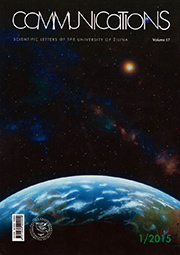Utility of Computer Modelling in Determination of Safe Available Evacuation Time
Utility of Computer Modelling in Determination of Safe Available Evacuation Time
Author(s): Vladimir Mozer, Jiří Pokorný, Petr Kučera, Lubica Vrablova, Peter WilkinsonSubject(s): Security and defense, Methodology and research technology, Health and medicine and law, ICT Information and Communications Technologies
Published by: Žilinská univerzita v Žilině
Keywords: available safe evacuation time (ASET; t2-fire; CFAST; layer height; toxicity;
Summary/Abstract: The main aim of the paper is to evaluate the primary factors affecting the safe available evacuation time with the utility of computer modelling, namely Consolidated Model of Fire and Smoke Transport (CFAST) computer model by NIST. The traditionally accepted base value of 2.5 minutes, used in many design standards, may not be appropriate due to its very generalised nature. Hence, a multi-criteria analysis is carried out in which four standard fire scenarios (fire growth rates) are modelled in a set of compartments with varying geometry. The simulation results are assessed against a range of critical conditions, including visibility, toxicity and temperature. Obtained safe available evacuation times are then compared to the standardised values used in design. The results show that the standardised times derived from the 2.5-minutes base value are not as conservative as believed; both under- and overprediction have been identified. The outcomes indicate that a review of the standardised available safe evacuation times should be carried out.
Journal: Komunikácie - vedecké listy Žilinskej univerzity v Žiline
- Issue Year: 17/2015
- Issue No: 1
- Page Range: 67-72
- Page Count: 6
- Language: English

